The Avatar has been explored extensively since the birth of Second Life in 2003. It is an almost unavoidable topic in a world that is progressively being deconstructed in favour of the digitally designed self, not just for game play but also for community outreach. Yet not many in the art world have managed to engage with the convivial soul and harrowing body of the digital self as accurately as Ed Atkins.
Recently Atkins opened Corpsing, his first German solo show at MMK Frankfurt which is perhaps his darkest CGI offering yet. While Atkins’s video work is visually impressive–the highly rendered avatars and landscapes are beyond comprehension–the minute details he offers on screen could be likened to photo-realistic memento mori from 16th-century oil paintings; from the contact lens the model wears reflecting the bookshelves and vases of flowers in the left-hand corner of the bedroom to the tiny pimpled skin and hair follicles of a chicken breast and the rippled blood that splashes over the plastic trays inside airport customs. The translation of “memento mori” too–variously: “remember that you have to die”, “remember you must die” or simply “remember death”–feels utterly fitting.
But this is only half of the viewing experience, and the way Atkins uses sound and texture to build on the repetitive, ever looping scenes that unfold is key in the way he jostles the viewer into their immersive bespoke suits–familiar to all, but always unique to the individual. Is it the clammy mouth wetting his lips, the melancholic murmurings of “I’m sorry” or the clashing comedy of Disneyland anthems in moments of human despair that gets right to the heart of each particular onlooker?
“Corpsing” describes a moment when an actor recoils from his or her role in the theatre, for example, they forget their lines or suddenly break into a fit of laughter on stage. Although we know that roles played by actors can never attain the status of an authentic figure–they can only hope to “embody” it in a seamless delivery to the audience–it’s still surprising witnessing that rupture occur for the real actor on stage. Atkins has likened the term to “cracking-up”, going mad.
His recent video installation comprises of two videos, Hisser and Safe Conduct, that are spread over 800sqm and two floors of the museum. The installations are dizzying. Hisser is played over five screens, stilted but identical, in four rooms, telling the loose plot of a man in his late forties who was consumed by a cesspool which suddenly opened up under his house in 2013 in Florida. Based loosely on a real occurrence, the character seems sick but the sickness is undefined, suffering a strange subconscious addiction like most of Atkins’s models. This time he seems stuck in a childhood bedroom, moving around the room tormented or sleeping in a bed that’s too small for him. He often collapses, muttering or wanking in the corner, waiting for the moment the room starts to shake (as it does at different intervals) pulling him down into a white landscape or black void. Watching it on repeat you ask the same questions: Who was he? Who is he now? Can he be re-built or replayed? Is this a typical moment of despair perhaps…or a pause in the game. Admittedly it is hard to really be certain of the plot lines of Atkins’s films, he takes you into spaces of weird fiction, always presenting you with a threshold between two worlds, an ontological wormhole so to speak, where nothing is certain and there is no true outcome.
In the second film, Safe Conduct, he orchestrates the duality of corpsing. The character physically steps out of his role as a human by peeling back his skin, removing his hands, intestines and shit into trays and placing them clumsily on a conveyer belt for custom checks before boarding a British Airways flight. Once in the sky, the plane hovers above seemingly celestial clouds but as the sun beams through the windows, the protagonist buckles into the infamous anxiety-ridden brace position and evaporates. He literally de-corpses, but why shouldn’t he? He is a CGI model that Atkins has programmed after all, not a human re-enacting a role, but even the death of this persona sends a shiver down the spine.
Atkins is masterful in repurposing the tools of video game play, both emotive and sensory, but in his case, the player becomes the viewer and instead of controlling the actions of the character they become mentally embroiled with Atkins’s own narratives. The viewer becomes immersed in well-defined worlds that morph between fact and fiction. Atkins uses much of the same terminology, setting and narrative elements that video games do, moving from fantasy horror–like being able to remove one’s organs but still walk–to off-time pauses where the player stares up at a wall or taps his thumb idly. Key gaming factors like replayability and immersion play a part too, as the video works have no definite end or beginning, they play on eternally, again, and again, and again.
Atkins’s works aesthetically recreate heightened sensations of the familiar but exceed the parameters of ordinary experience. In a world that doesn’t normally allow us to meditate on such grotesque characteristics of human nature, viewing his work can act as a digital therapy.
“Ed Atkins. Corpsing” runs until 14 May at MMK Museum für Moderne Kunst Frankfurt am Main


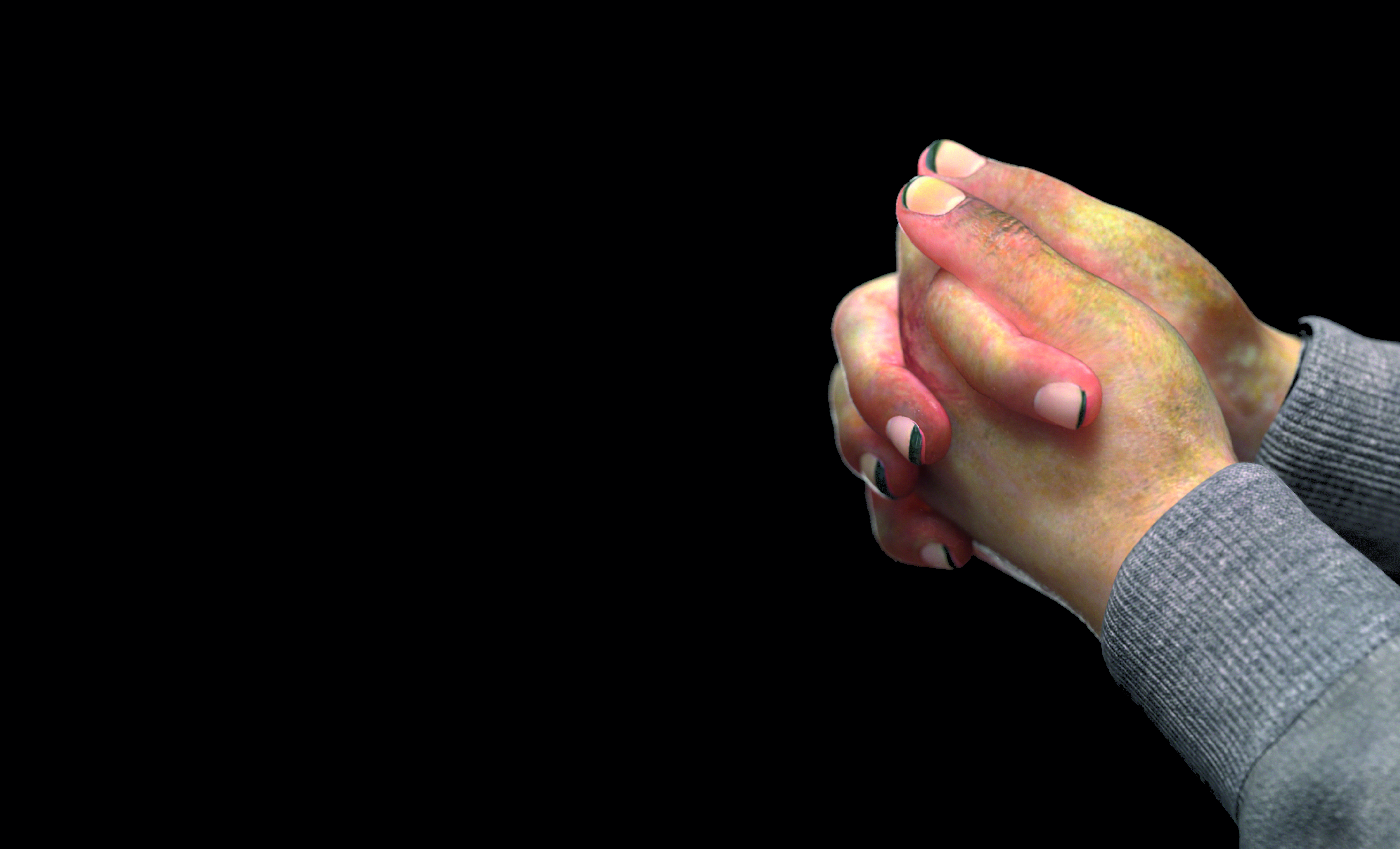
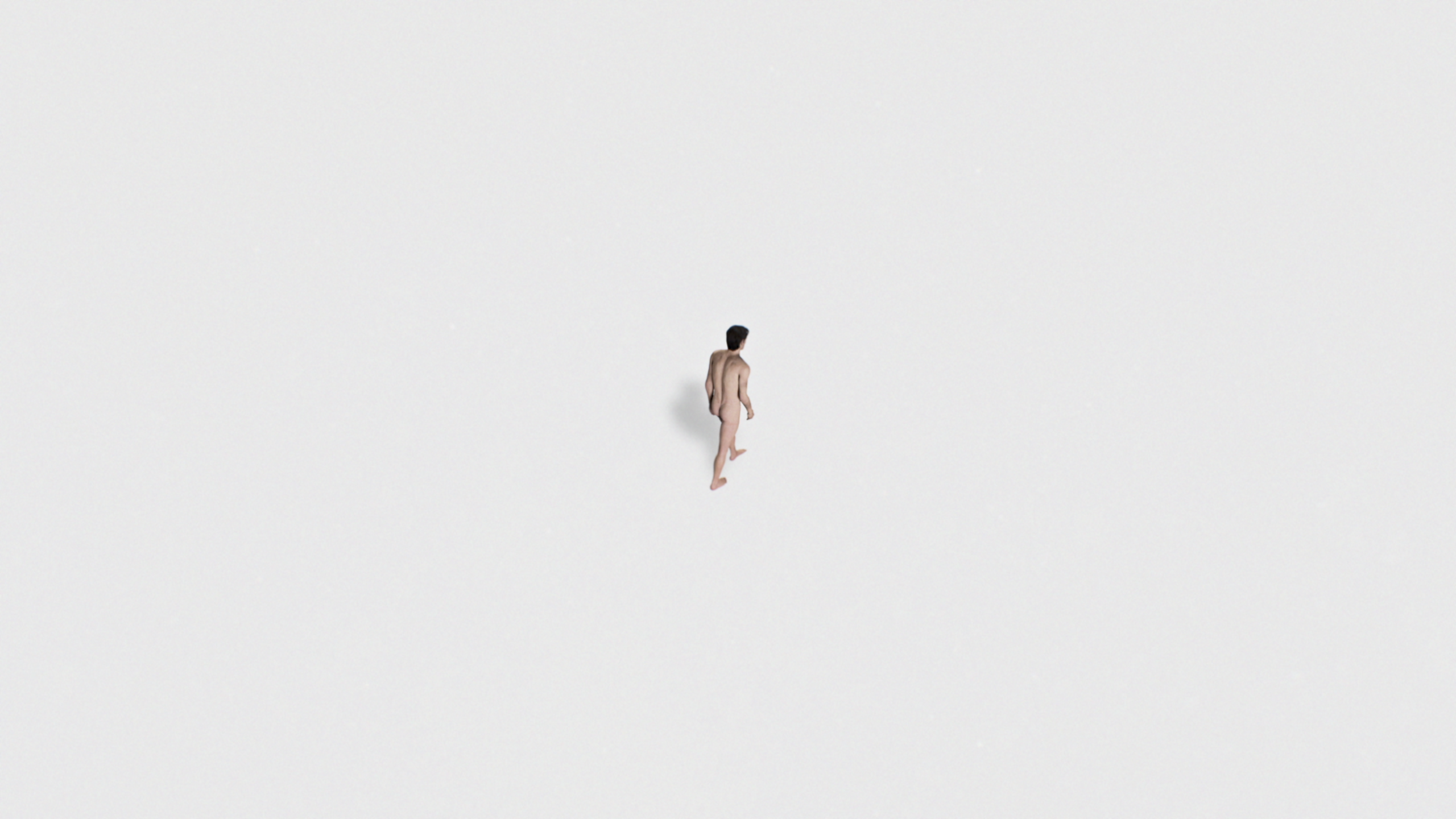
Ed Atkins, Hisser, 2015/2017. Filmstill, Courtesy the artist, Galerie Isabella Bortolozzi, Berlin, Cabinet Gallery, London, Gavin Brown’s Enterprise, New York and dépendance, Brussels
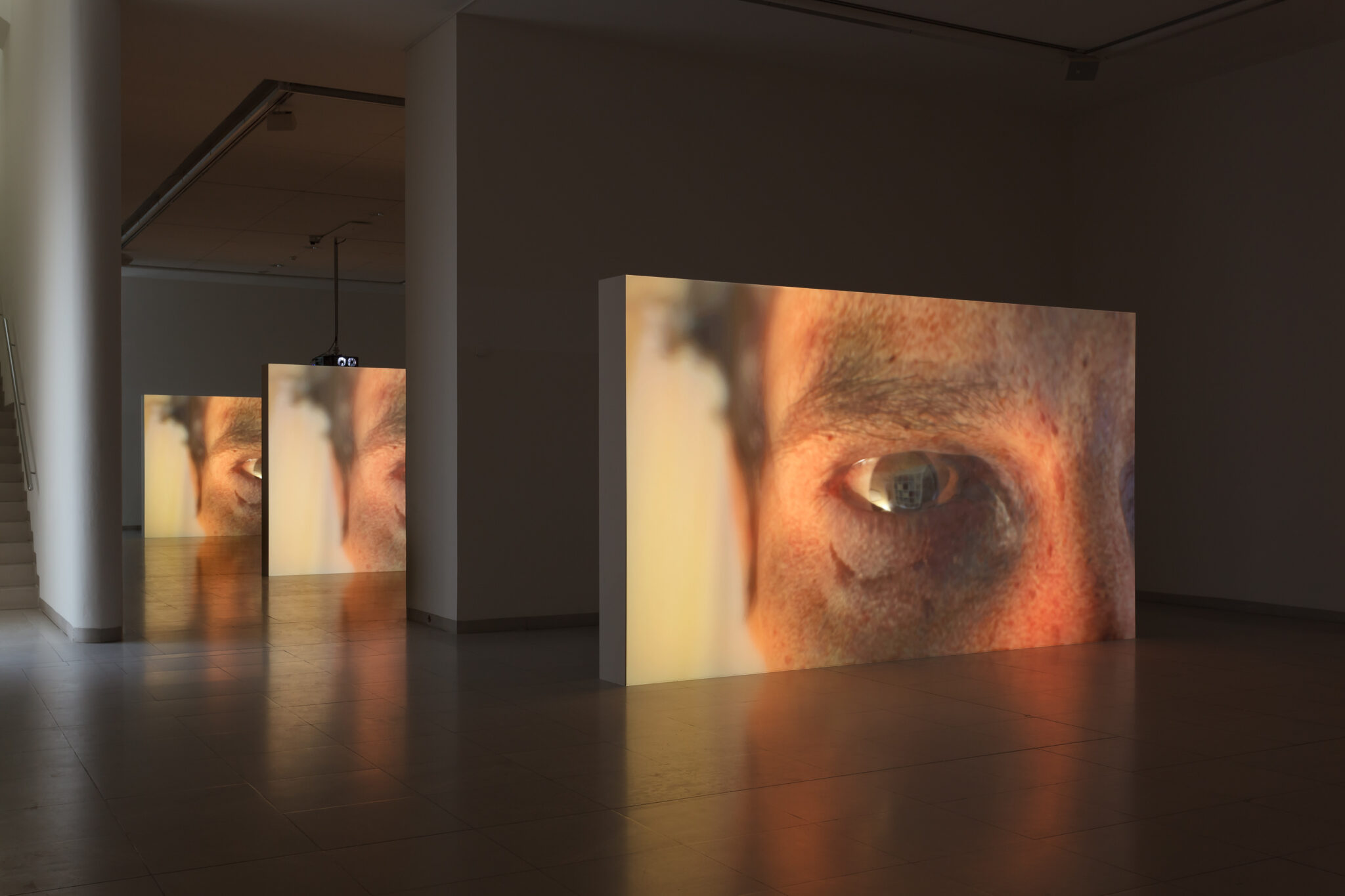
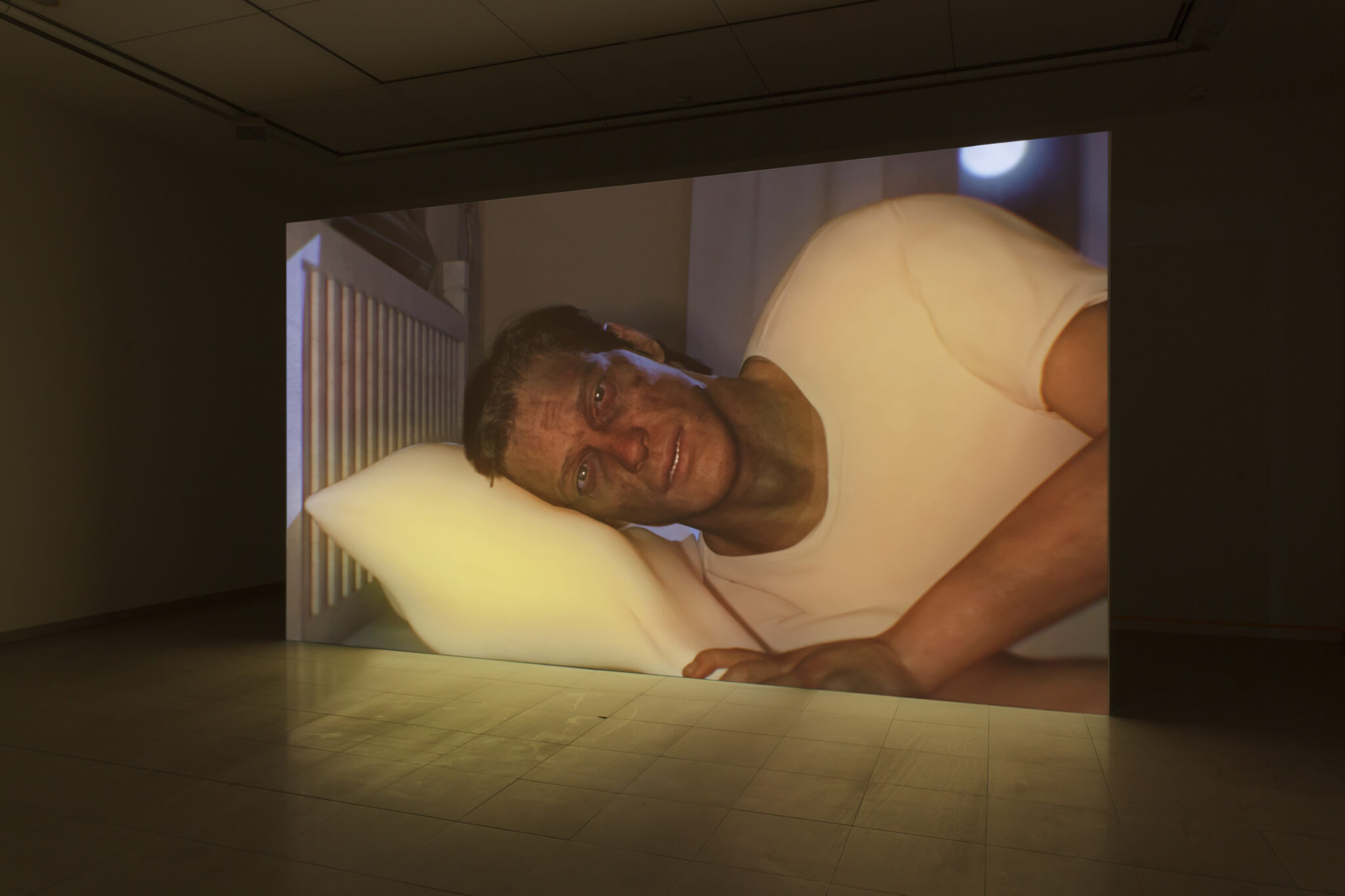
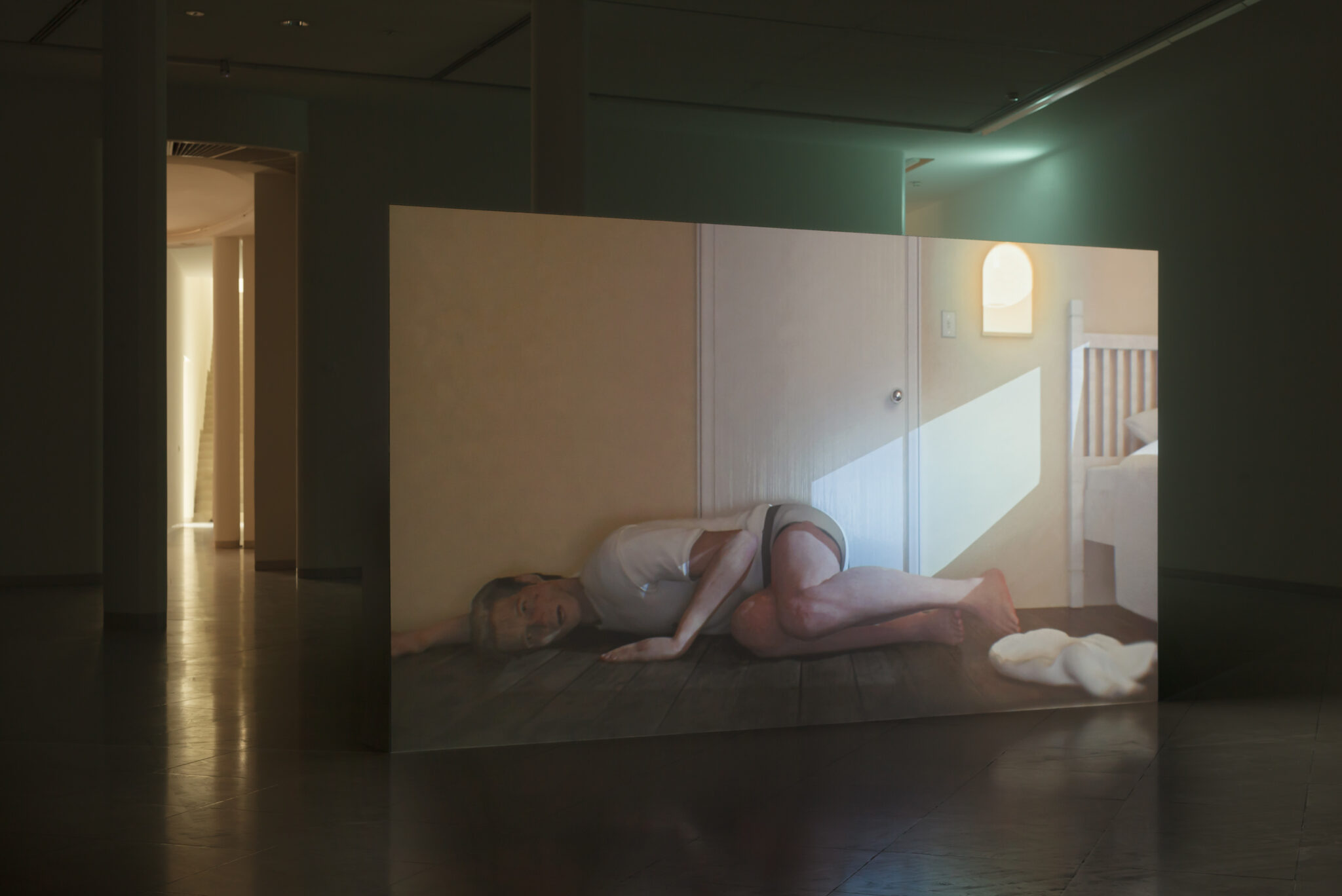

Ed Atkins, Safe Conduct, 2016. Ausstellungsansicht / exhibition view MMK Museum für Moderne Kunst Frankfurt am Main 2017, Filmstill, Courtesy the artist, Galerie Isabella Bortolozzi, Berlin, Cabinet Gallery, London and Gavin Brown’s Enterprise, New York, Foto / photo: Axel Schneider





